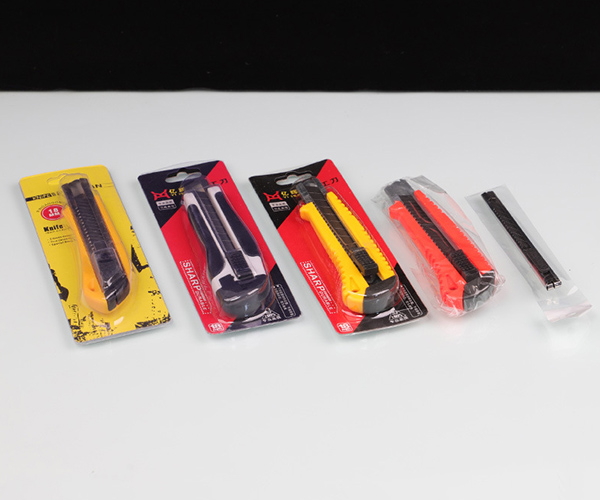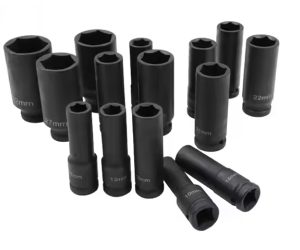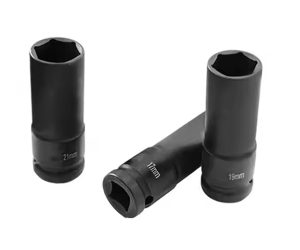Choosing the right tool for your cutting needs can sometimes be a tricky decision, especially when comparing seemingly similar tools like box cutters and utility knives. While both are designed for cutting tasks, they have unique features that make each more suitable for specific applications. In this article, we’ll explore the differences between box cutters and utility knives, helping you choose the right tool for your business. We’ll dive deep into the features, uses, benefits, and downsides of both, ensuring you’re armed with the knowledge to make an informed decision. Ready for the good part? Let’s get into it.
1. What is the Difference Between a Box Cutter and a Utility Knife?
Box cutters and utility knives are often used interchangeably, but they are not quite the same thing. A box cutter is a smaller, lighter tool that typically features a retractable blade designed for cutting through cardboard, paper, and plastic. It’s compact, easy to use, and great for tasks where precision is required. On the other hand, a utility knife is a more versatile, often sturdier tool that can be used for a broader range of cutting jobs. It has a similar retractable blade, but its design is more robust, which makes it ideal for cutting through tougher materials such as wood, plastic, and drywall.
So, what’s the real story? It all comes down to the material and task at hand. A box cutter is perfect for delicate or small-scale tasks like opening boxes or cutting through paper, whereas a utility knife excels when you need to cut through thicker materials or tackle heavy-duty tasks. Let’s explore these tools further to understand which one fits your needs best.
2. Why is Understanding the Difference Important?
Understanding the distinction between a box cutter and a utility knife is essential for selecting the right tool for the job. If you choose the wrong tool, not only can it make the job more difficult, but it could also result in damage to the material or, worse, injuries. For instance, if you use a box cutter to cut through thick plastic or wood, the blade might snap, and you’ll waste time and money replacing it. On the other hand, using a utility knife for delicate tasks may cause unnecessary damage to the material or make it harder to cut accurately.
What’s the catch? By understanding which tool is best suited for each task, you not only ensure better performance but also improve safety and efficiency. For example, box cutters are perfect for precise, light-duty cuts, while utility knives handle heavier, more demanding tasks. Let’s look at the specific uses of each to make this clearer.
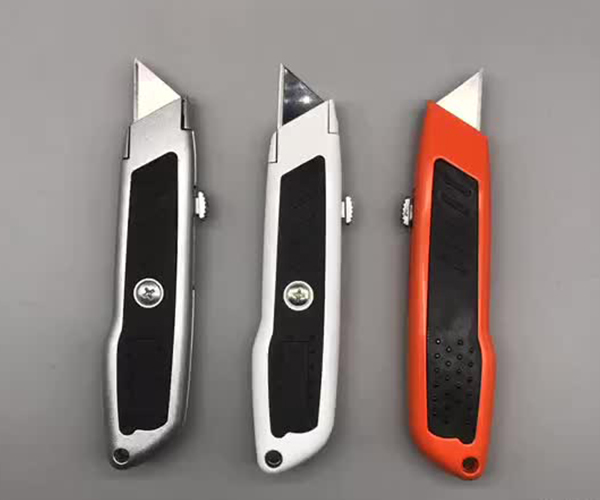
3. What are the Key Features of a Box Cutter?
Box cutters are typically small, ergonomic tools designed for ease of use in light-duty cutting tasks. They often feature a retractable blade that can be adjusted for exposure, depending on the cutting depth needed. Box cutters usually have a slim handle, making them easy to control, which is perfect for precision cutting.
But here’s the kicker: the blade of a box cutter is often smaller and thinner than that of a utility knife, making it perfect for cutting through materials like cardboard, paper, and plastic without much force. However, it’s not ideal for tougher, thicker materials. Most box cutters use snap-off blades, which means that when the blade becomes dull, you can snap off a segment to reveal a fresh, sharp edge.
If you’re working in a warehouse or on a packaging line, you’ll likely need a tool with a long-lasting blade that’s easy to replace. This is where box cutters excel. The small, retractable blades offer both convenience and precision, but there are limitations when it comes to tougher materials. Let’s examine the utility knife next to see how it compares.
4. What are the Key Features of a Utility Knife?
Utility knives are more versatile and generally heavier-duty tools compared to box cutters. One of the main differences is the blade. Utility knives typically feature larger, thicker blades that are designed to handle more substantial materials, such as drywall, thick plastics, and wood. The blade is also retractable, allowing for safer storage and easy adjustment based on the cutting task.
You might be wondering, “What makes the utility knife more durable?” Well, utility knives often have metal handles that add to their overall durability. The blade is also designed to lock securely into place, offering more stability during heavy-duty tasks. For cutting through dense materials, a utility knife is a go-to choice. While box cutters might fail under pressure, utility knives handle the job with ease.
It’s clear: utility knives are built for versatility, offering both strength and reliability when cutting through tougher materials. However, they are bulkier than box cutters, which means they may not be as suited for precision work. So, what should you use each for? Let’s move on to specific use cases.
5. When Should You Use a Box Cutter?
Box cutters are ideal for light, precise cutting tasks. They excel in situations where you need to open boxes, cut through tape, or trim lightweight materials like paper and plastic. The compact design allows for quick and easy use, and the retractable blade ensures safety when not in use.
Ready for the good part? Box cutters are also extremely useful in environments where space is limited. In warehouses or offices, for instance, a box cutter can be carried around easily in your pocket or on a tool belt. Whether it’s cutting cardboard, plastic wrap, or other similar materials, the box cutter is the lightweight tool you’ll want on hand.
However, keep in mind that box cutters aren’t meant for heavy-duty tasks. If you attempt to cut through wood, metal, or thick plastic, you risk damaging the tool or dulling the blade quickly. Understanding the limitations of the box cutter ensures that you can use it for its intended purpose without frustration. Let’s look at the utility knife to see where it shines.
6. When Should You Use a Utility Knife?
Utility knives are perfect for a wide range of tasks, especially when cutting through tougher, thicker materials. They are commonly used in construction, renovation, and industrial settings. If you’re cutting through drywall, insulation, or thick plastic sheeting, a utility knife is the tool you need.
What’s the real story here? Utility knives are built for versatility. You can adjust the blade’s length to accommodate different materials, and with a firm grip on the heavier tool, you can make quick, clean cuts. Because of their durable construction and adjustable blade lengths, utility knives can handle both precision tasks and heavy-duty cuts with ease.
So, whether you’re cutting through a carpet, stripping wires, or scoring drywall, a utility knife should be your go-to. While box cutters are perfect for lighter tasks, utility knives provide the versatility required for more complex cutting jobs. Now, let’s dive into the pros of using both tools.
7. What are the Pros of Using a Box Cutter?
Box cutters have several advantages, particularly when it comes to light-duty tasks. They are compact and easy to handle, making them ideal for jobs that require precision without extra force. Additionally, box cutters are generally affordable and easy to replace when the blade gets dull.
Here’s the kicker: box cutters also tend to be safer than utility knives for tasks involving small, delicate cuts. With their retractable blades, there’s little chance of accidental injury, and the slim, ergonomic design makes them comfortable to use for long periods. They are an excellent choice for anyone who needs a quick, reliable tool for opening packages or cutting lightweight materials.
For businesses that primarily deal with packaging and shipping, box cutters are an essential part of the toolset. They are easy to use, cost-effective, and designed for the type of cutting that’s needed in fast-paced environments. But of course, there are trade-offs. Box cutters are not the right choice for heavier tasks. Let’s see what makes utility knives better suited for certain situations.
8. What are the Pros of Using a Utility Knife?
Utility knives are the go-to option for a wide range of heavy-duty tasks. The main advantage of using a utility knife is its versatility. You can adjust the blade to the perfect length depending on the material you’re cutting, and the durability of the tool means it’s built to last.
Ready for the good part? Utility knives are also designed with comfort and safety in mind. Many models come with ergonomic handles that reduce hand strain during long jobs. And because the blade can be adjusted and replaced, utility knives last much longer than box cutters, making them a better long-term investment for many businesses.
From construction sites to crafting projects, utility knives are built for heavy-duty tasks. Their versatility, combined with safety features, makes them an indispensable tool in almost any toolkit. However, they are bulkier than box cutters and may not be as convenient for quick, precise cuts. Let’s move on to the potential drawbacks of each tool.
9. What are the Cons of Using a Box Cutter?
While box cutters excel at light-duty tasks, they have their limitations. The most significant disadvantage is that they are not suitable for cutting through tougher materials. If you need to cut through thick plastic, wood, or other dense materials, a box cutter will quickly become ineffective, and you’ll likely damage the tool.
But here’s the kicker: because box cutters have smaller blades, they may not provide the precision you need for some tasks, especially if you’re cutting through thicker materials. They also tend to wear out faster than utility knives, and the blade needs to be replaced frequently.
Despite these limitations, box cutters are still a popular choice for many businesses due to their convenience and ease of use. They are perfect for lighter cutting tasks, but be sure to recognize when it’s time to switch to a utility knife for tougher jobs. Let’s now explore the cons of utility knives.
10. What are the Cons of Using a Utility Knife?
Utility knives are incredibly versatile, but they come with their own set of drawbacks. For starters, they are bulkier and heavier than box cutters, making them less convenient for smaller tasks. If you’re looking for a quick and easy cut, a utility knife might feel cumbersome and overbuilt.
What’s the real story here? While utility knives are built to last, they also come with a higher upfront cost compared to box cutters. Additionally, they require more maintenance, as you’ll need to adjust and replace blades more often, especially when using the knife on tougher materials.
While utility knives are an excellent choice for heavy-duty tasks, they are less practical for lighter work. So, when should you use a utility knife over a box cutter? Let’s find out.
11. Which is Safer: Box Cutter or Utility Knife?
Safety is always a top priority when choosing cutting tools for your business, and both box cutters and utility knives come with their own safety features. Box cutters are designed with retractable blades, which automatically hide the blade when not in use, reducing the risk of accidental cuts. The slim, lightweight design of the box cutter also makes it easier to handle and control, especially for delicate tasks.
But here’s the kicker: utility knives, while slightly bulkier, often come with locking mechanisms to secure the blade in place during use. This makes them safer when cutting through tough materials. Additionally, many models come with ergonomic handles designed to reduce hand strain and prevent slipping, which is particularly important for extended use.
Both tools are relatively safe when used correctly, but the box cutter is often considered safer for lighter, more precise cuts because of its automatic blade retraction. Utility knives, on the other hand, are more stable and secure for heavy-duty tasks that require a firmer grip. Regardless of the tool, proper handling and safety precautions are essential. Now that we’ve covered safety, let’s dive into the maintenance of these tools.
12. How Do You Maintain a Box Cutter?
Maintaining a box cutter is relatively simple and doesn’t require much effort. Since the blade is typically retractable, all you need to do is keep the mechanism clean and free from debris. This ensures smooth operation, especially when adjusting the blade. For the blade itself, you’ll need to replace it when it becomes dull or worn. Most box cutters use snap-off blades, so you can easily discard the old blade and reveal a fresh one.
Ready for the good part? Blade replacements are quick and cost-effective, which makes maintaining a box cutter affordable. However, be sure to store your box cutter properly, especially when not in use. Keeping it in a secure, dry place will prolong its lifespan and ensure it’s always ready for action.
Since box cutters are lighter and have fewer moving parts compared to utility knives, their maintenance is straightforward. The biggest concern is keeping the blade sharp and ensuring it’s properly retracted when not in use. Let’s look at how to maintain a utility knife to see if there are more considerations involved.
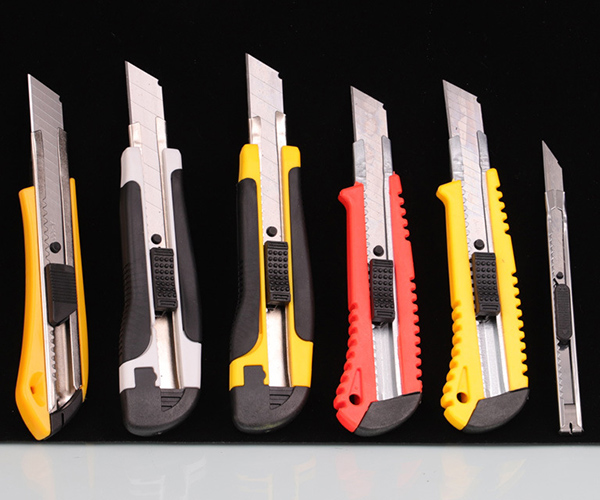
13. How Do You Maintain a Utility Knife?
Maintaining a utility knife involves several steps, starting with cleaning the tool after each use. Unlike box cutters, utility knives often feature a more complex mechanism, so keeping the blade and handle free from dirt and debris is essential to ensure smooth operation. You’ll also need to regularly replace the blade, especially after heavy use. The blades in utility knives are designed for quick replacement, and many models have a blade storage compartment built right into the handle.
Here’s the kicker: one of the most important maintenance tasks for a utility knife is ensuring the blade is securely locked in place. Over time, the locking mechanism may become worn or dirty, leading to instability while cutting. Regularly inspecting and cleaning the locking mechanism ensures the tool performs safely and effectively.
Utility knives are built for long-term durability, but they require more attention compared to box cutters. Blade maintenance and keeping the locking mechanism clean are key to ensuring the tool lasts. Now that we know how to care for both tools, let’s explore how to choose between the two for your business needs.
14. How Do You Choose the Right Tool for Your Task?
Choosing the right tool for your specific task is crucial for efficiency and safety. If you’re working in a warehouse or on a packaging line, a box cutter might be the better option due to its compact size, precision, and affordability. However, if you’re working in construction, renovation, or any job that requires heavy-duty cutting, a utility knife is the right choice due to its versatility, durability, and strength.
Ready for the good part? It’s essential to consider factors such as the material you’re cutting, the level of precision needed, and the overall durability of the tool. For example, if you need to cut through heavy-duty plastic, drywall, or thick cardboard, a utility knife will get the job done faster and more efficiently. On the other hand, if you’re opening boxes or cutting through paper, a box cutter is all you need.
Knowing when to use each tool ensures you work smarter, not harder. It’s all about matching the tool to the task. So, when should you choose a box cutter, and when should you opt for a utility knife? Let’s break it down clearly.
15. What Should You Consider When Buying a Box Cutter or Utility Knife?
When purchasing either a box cutter or a utility knife, you’ll want to consider several factors to ensure you’re getting the best tool for your needs. For box cutters, the blade type, handle design, and ease of use are key features. If you’re looking for a cost-effective, lightweight tool for everyday tasks, a basic box cutter will do the job. However, you might want to invest in a box cutter with a comfortable grip and an easy-to-replace blade system if you need it for frequent use.
On the other hand, utility knives come in a wide range of models with varying features, such as adjustable blade lengths, ergonomic handles, and built-in storage for extra blades. What’s the real story here? Utility knives are more versatile and can handle a wider range of tasks, but they come at a higher price point. If you need a reliable, heavy-duty tool that will stand the test of time, a utility knife is your best bet.
So, how do you make your decision? Weighing the cost against the features and durability of each tool will help you choose the one that fits your specific needs. Let’s wrap things up and review some final thoughts on these tools.
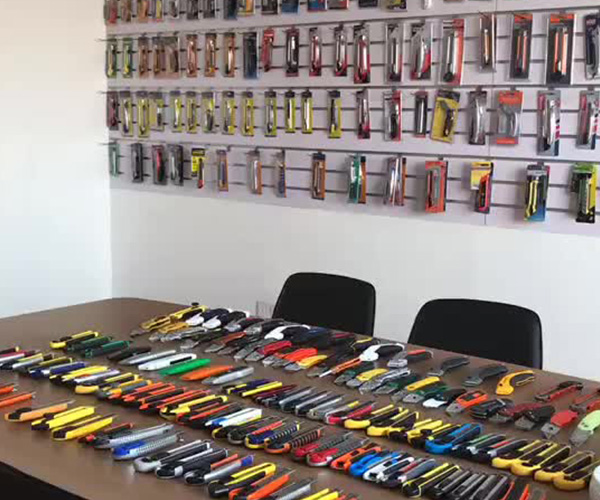
Conclusion
In this article, we’ve covered the key differences between box cutters and utility knives, exploring their features, benefits, and drawbacks. While box cutters are ideal for light-duty tasks and precision cuts, utility knives offer the versatility and strength needed for heavy-duty jobs. Understanding the strengths and limitations of each tool is essential to making an informed decision.
To sum up, if you’re working with light materials and need a quick, easy-to-use tool, a box cutter is perfect. However, if you’re tackling tough materials or need a more durable option, a utility knife is your go-to. Ultimately, choosing the right tool for your task ensures better efficiency, safety, and longevity. Choose wisely, and you’ll never be caught in a situation where your tool isn’t up to the job.
FAQ
Q1: What is the difference between a box cutter and a utility knife?
A box cutter is a small, lightweight tool used for light cutting tasks like opening boxes, while a utility knife is a more versatile tool designed for heavy-duty jobs with tougher materials.
Q2: How does a utility knife work?
A utility knife works by using a retractable, replaceable blade that can be adjusted to different lengths depending on the material being cut. The blade locks securely in place for safety.
Q3: What are the pros of using a box cutter?
Box cutters are compact, easy to use, and affordable. They are ideal for light cutting tasks like opening boxes, cutting tape, and trimming plastic or paper.
Q4: When should you use a utility knife?
Utility knives are ideal for tougher materials such as wood, drywall, and thick plastic. They are more durable and versatile, making them perfect for heavy-duty cutting tasks.
Q5: How do you maintain a utility knife?
Maintaining a utility knife involves cleaning it regularly, replacing the blade when it becomes dull, and ensuring the locking mechanism is functioning properly to prevent accidents.

